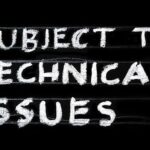
How To Sell Inbound Marketing To A Skeptic
October 30, 2017
A Beginner’s Guide To Inbound Marketing
November 1, 2017At iSmart Communications, we are a big supporter of Inbound Marketing as a primary way to generate leads for our clients.
We have come across several questions on why we recommend this approach over other, more traditional methods of marketing. Let’s break down the pros and cons of Inbound Marketing so you can decide for yourself which one would work better.

Pros
#1: It provides a cost-effective way to generate leads consistently
Inbound Marketing is centered on creating the right content delivered to the right people, who use the Internet to find their products or services.
Using channels like your Blog, Social Media and Search Engine Optimisation, you can put valuable content in front of interested prospects.
Blog posts can also be used to link your visitors to other relevant lead generating assets. For example, have a post about the best UX/UI optimization tips for your website? You can link an offer to a free whitepaper or website assessment within the blog post, to generate potential leads to nurture.
Not to mention, blog posts posted years ago can still be generating leads for you today.
#2: You can build long-term relationships with your potential customers
Picture how you first engage with a brand online. It’s likely that you see a piece of content created by a brand, that you resonate with and enjoy.
But perhaps you aren’t ready to buy yet. You follow it on its Facebook and/or Instagram accounts, or maybe join its mailing list. After which it delivers a consistent stream of content that you engage with.
After a while, you have a more informed (and positive) impression of the brand, which makes you more receptive to buying its products. This is lead-nurturing in a nutshell.
On top of that, Inbound Marketing gives you multiple opportunities to engage your customers. Talk to them on social media or in blog comments, or ask them a question via your email newsletters.
Bonus: you can gather data about what your prospective leads and customers enjoy or prefer and make smart, data-driven decisions about what content to create or what strategy to implement to move your visitors through the Buyer’s Journey.
Cons
#1: It can be intimidating to get started on Inbound Marketing
If you are coming from a traditional marketing background, perhaps all you needed to do was to know what media you wanted to use and when, coming up with ad creatives and submitting your ad to your media outlet. You adhered to traditional marketing theories like the 4 Ps of marketing, AIDA and Ansoff’s Matrix.
Enter Inbound Marketing.
Suddenly you have terms like Blogging, Repurposing Content, Social Media sStrategy, Search Engine Optimisation, Website UX/UI, Mobile Responsiveness, Marketing Automation, CRM, etc.
You may be thinking – all this sounds so alien! I just want to increase my sales and keep my job!
You need a diverse set of skills to get started on Inbound Marketing. If you are a one-person marketing team, how do you possibly have the time for everything? Do you have the time or budget to learn and execute everything?
To address this, you could either: spend time learning inbound marketing for yourself and your team, or outsource the work to a marketing agency.
#2: It requires some strategic planning to be effective
Effective Inbound Marketing requires some strategic planning. After all, you don’t want to be doing all the right things but not achieve your goals.
Well, you aren’t alone. A survey by DM News in 2014 shows that “a lack of an effective strategy” was the biggest obstacle in achieving marketer’s goals.
Thankfully, it’s not that difficult to come up with a strategy. HubSpot has created an easy-to-follow framework you can use to develop your marketing strategy which we have summarized below.
- Identify your audience
- Identify their ‘hunting ground’, habits and comfort zone
- Identify Pains, Problems and Questions
- Create a Content Calendar
- Create a Promotions Plan
So we’ve outlined some pros and cons of using Inbound Marketing. There are some challenges with getting started on Inbound Marketing, but if we break this process down into short, actionable steps, it won’t sound as intimidating.


